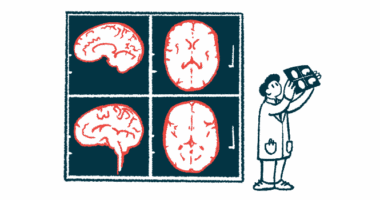Uplizna Reduces NMOSD Attack Severity, Analysis Shows

Uplizna (inebilizumab-cdon) effectively reduced the severity of attacks in people with neuromyelitis optica spectrum disorder (NMOSD) who continued to experience attacks after being treated with the therapy during the N-MOmentum Phase 2/3 clinical trial, recent data analysis shows.
The data also demonstrated lower levels of key disease-related biomarkers, relative to placebo, in treated patients.
These new findings are being presented at the 48th Annual Meeting of the North American Neuro-Ophthalmology Society (NANOS 2022), held Feb.12–17, in Austin, Texas.
“While the Uplizna clinical trial demonstrated that a majority of patients were attack-free after being treated, it also offered an increased understanding of how Uplizna impacted the severity of the attacks that occurred,” Kristina Patterson, MD, PhD, said in a press release. Patterson is medical director of neuroimmunology at Horizon Therapeutics, the company that markets the therapy.
“This is an important consideration for physicians as they evaluate treatment options for their patients, as severe attacks can have debilitating consequences,” Patterson added.
Uplizna was approved in the U.S. to treat adults who carry antibodies against aquaporin-4 protein (AQP4), the most common immune target of NMOSD-related antibodies. The therapy is designed to deplete antibody-producing immune B-cells and reduce attacks associated with the disease, which can lead to irreversible damage to the optic nerve, spinal cord, and brain.
Uplizna’s approval was supported by data from the now completed Phase 2/3 N-MOmentum study (NCT02200770). During the 28-week trial, 89% of the 161 participants who were assigned Uplizna randomly remained attack-free, versus 58% of 52 patients who received placebo.
This analysis focused on the remaining 11% of participants who were not attack-free after Uplizna treatment and examined the relationship between attack severity and two disease-related biomarkers — serum glial fibrillary acidic protein (sGFAP) and serum neurofilament (sNfL).
Attacks in these participants were assessed as major or minor based on changes in neurological function using the modified Opticospinal Impairment Scale (OSIS).
According to Horizon, of the 18 total attacks that occurred in Uplizna-treated patients during N-MOmentum, 12 (67%) were minor, and six (33%) were major. In comparison, among the 22 attacks occurring in the placebo group, 12 (55%) were minor, and 10 (45%) were major attacks.
Overall, levels of sGFAP were significantly higher during major attacks compared to minor attacks and trended higher for optic neuritis specific attacks, or the inflammation of the optic nerve. At the time of the attacks, sGFAP concentration increased significantly compared to before the trial in those who received placebo, but not in Uplizna-treated participants.
SNfL levels were higher during major than minor attacks, even though the levels did not correlate with attack severity. Individuals in the placebo group who experienced attacks showed higher concentrations of SNfL at week 26 compared to those treated with Uplizna.
“Acute attacks in NMOSD can lead to irreversible consequences and permanent disability in patients, making targeted treatments important to limit disease activity and its severity in patients,” said Jeffrey Bennett, MD, PhD, at the University of Colorado and co-author of the published study that reported N-MOmentum findings.
“This analysis illustrates the clear clinical impact of Uplizna to reduce the debilitating effects of disease while contributing to our understanding of the link between serum biomarkers and severity of attacks,” Bennett added.






